-
 Bitcoin
Bitcoin $87,395.4530
1.23% -
 Ethereum
Ethereum $2,013.2568
0.96% -
 Tether USDt
Tether USDt $1.0003
0.03% -
 XRP
XRP $2.3518
-0.77% -
 BNB
BNB $639.9538
3.64% -
 Solana
Solana $139.1754
1.50% -
 USDC
USDC $1.0000
0.02% -
 Dogecoin
Dogecoin $0.1920
-0.49% -
 Cardano
Cardano $0.7371
1.73% -
 TRON
TRON $0.2345
2.06% -
 Chainlink
Chainlink $15.5465
3.51% -
 Toncoin
Toncoin $3.9151
8.64% -
 Avalanche
Avalanche $22.0778
0.33% -
 UNUS SED LEO
UNUS SED LEO $9.7644
-0.47% -
 Stellar
Stellar $0.2872
0.83% -
 Sui
Sui $2.7758
9.32% -
 Shiba Inu
Shiba Inu $0.0...01413
-0.76% -
 Hedera
Hedera $0.1924
0.81% -
 Polkadot
Polkadot $4.5989
-0.54% -
 Litecoin
Litecoin $93.0851
1.76% -
 Bitcoin Cash
Bitcoin Cash $324.2149
-2.40% -
 MANTRA
MANTRA $6.5160
0.59% -
 Bitget Token
Bitget Token $4.9778
-0.12% -
 Pi
Pi $0.8227
-0.13% -
 Dai
Dai $1.0001
0.01% -
 Ethena USDe
Ethena USDe $0.9991
-0.05% -
 Hyperliquid
Hyperliquid $14.4811
5.22% -
 Uniswap
Uniswap $6.7633
0.68% -
 Monero
Monero $223.5573
1.03% -
 NEAR Protocol
NEAR Protocol $3.0278
2.50%
What are the privacy protection mechanisms of blockchain?
Blockchain's transparency conflicts with privacy, but zero-knowledge proofs, mixing services (like CoinJoin), homomorphic encryption, and privacy coins (Monero, Zcash) offer solutions. However, regulatory concerns and potential misuse remain significant challenges.
Mar 24, 2025 at 11:22 am

Key Points:
- Blockchain's inherent transparency is often at odds with privacy. Several mechanisms aim to bridge this gap.
- Zero-knowledge proofs allow verification of information without revealing the information itself.
- Mixing services, like CoinJoin, obfuscate transaction origins and destinations.
- Decentralized mixers offer enhanced privacy but introduce new security considerations.
- Homomorphic encryption enables computation on encrypted data without decryption.
- Privacy coins like Monero and Zcash employ cryptographic techniques for enhanced privacy.
- Regulatory scrutiny and potential misuse remain significant challenges for privacy-enhancing technologies.
What are the privacy protection mechanisms of blockchain?
The very nature of blockchain – its transparent and immutable ledger – presents a significant challenge to user privacy. Every transaction is recorded publicly, making it potentially possible to track the flow of funds and link them to individuals. However, various mechanisms are being developed and implemented to enhance privacy within the blockchain ecosystem. These mechanisms aim to balance the benefits of transparency with the need for user confidentiality.
One prominent method is the use of zero-knowledge proofs (ZKPs). ZKPs allow one party to prove to another that a statement is true without revealing any information beyond the truth of the statement itself. This is crucial for blockchain privacy as it allows users to verify transactions without exposing sensitive details like transaction amounts or addresses.
Another technique involves mixing services, most notably CoinJoin. CoinJoin pools multiple transactions together, making it extremely difficult to trace the origin and destination of individual funds. By combining numerous transactions into a single, larger transaction, the individual components become indistinguishable, thereby protecting user privacy.
However, centralized mixing services introduce a potential single point of failure and trust issue. This has led to the development of decentralized mixers, which aim to improve privacy and security by distributing trust among multiple participants. While decentralized mixers offer enhanced privacy, they also introduce complexities and potential vulnerabilities that require careful consideration.
Homomorphic encryption is a powerful cryptographic technique that allows computations to be performed on encrypted data without requiring decryption. This has significant implications for blockchain privacy as it allows for the processing of sensitive information while maintaining its confidentiality. While still relatively nascent in its blockchain application, homomorphic encryption holds considerable promise for future privacy-enhancing solutions.
Privacy coins, such as Monero (XMR) and Zcash (ZEC), are designed from the ground up to prioritize user privacy. They employ advanced cryptographic techniques, including ring signatures and confidential transactions, to obscure transaction details. These techniques make it significantly more difficult, if not impossible, to trace transactions and link them to specific users. This increased privacy comes at the cost of some complexities in the underlying technology and potentially higher transaction fees.
The development and implementation of these privacy-enhancing technologies are ongoing, and they face several challenges. Regulatory scrutiny is a major concern, as governments worldwide grapple with the implications of enhanced blockchain privacy for tax evasion, money laundering, and other illicit activities. Furthermore, the very mechanisms designed to enhance privacy can be exploited for malicious purposes, highlighting the need for robust security measures.
How do zero-knowledge proofs protect privacy on the blockchain?
Zero-knowledge proofs allow a user to prove the validity of a transaction without revealing any information beyond its validity. Imagine proving you have the right key to unlock a digital vault without actually showing the key itself – that's the essence of a ZKP. This is achieved through complex cryptographic algorithms, ensuring transaction verification without compromising sensitive details like transaction amounts or participant identities.
What are the risks associated with decentralized mixers?
While decentralized mixers aim to enhance privacy by distributing trust, they also introduce new security challenges. The complexity of these systems can make them more vulnerable to bugs and exploits. Furthermore, the lack of a central authority makes it harder to resolve disputes or recover funds in case of theft or loss. Users must carefully vet the security and reputation of any decentralized mixer before using it.
How do privacy coins differ from traditional cryptocurrencies?
Unlike Bitcoin and other traditional cryptocurrencies where all transaction details are publicly viewable, privacy coins employ cryptographic techniques to obscure transaction information. This includes concealing the sender, recipient, and the amount of cryptocurrency transferred. While this enhanced privacy offers benefits for individual users, it also raises concerns about potential misuse for illegal activities.
What are the regulatory challenges facing blockchain privacy technologies?
Governments worldwide are struggling to balance the benefits of blockchain technology with the need to prevent its misuse for illicit activities. The enhanced privacy offered by technologies like ZKPs and privacy coins raises concerns about money laundering, tax evasion, and other financial crimes. This has led to increased regulatory scrutiny and efforts to develop frameworks for oversight and compliance.
Can blockchain privacy technologies be used for illegal activities?
The anonymity provided by blockchain privacy technologies can be misused for illegal purposes, such as money laundering and financing terrorism. This is a major concern for regulators and law enforcement agencies, who are working to develop strategies to detect and prevent such activities. The development and use of these technologies require careful consideration of their potential implications.
Disclaimer:info@kdj.com
The information provided is not trading advice. kdj.com does not assume any responsibility for any investments made based on the information provided in this article. Cryptocurrencies are highly volatile and it is highly recommended that you invest with caution after thorough research!
If you believe that the content used on this website infringes your copyright, please contact us immediately (info@kdj.com) and we will delete it promptly.
- Meme Coins Often Drive Short-Term Momentum, but Solid Infrastructure Is What Supports Lasting Success
- 2025-03-28 02:45:13
- Whale Activity Drives Pepe Coin Price Surge
- 2025-03-28 02:45:13
- Dive into the world of DAOs with Cointribune
- 2025-03-28 02:40:13
- Maven 11 Closes Its Oversubscribed Third Fund at $107 Million
- 2025-03-28 02:40:13
- Coin Master Free Spins and Coins: Updated Links for Free Rewards
- 2025-03-28 02:35:12
- Dogecoin (DOGE) URPD Chart Shows Where Large Chunks of DOGE Have Last Changed Hands
- 2025-03-28 02:35:12
Related knowledge
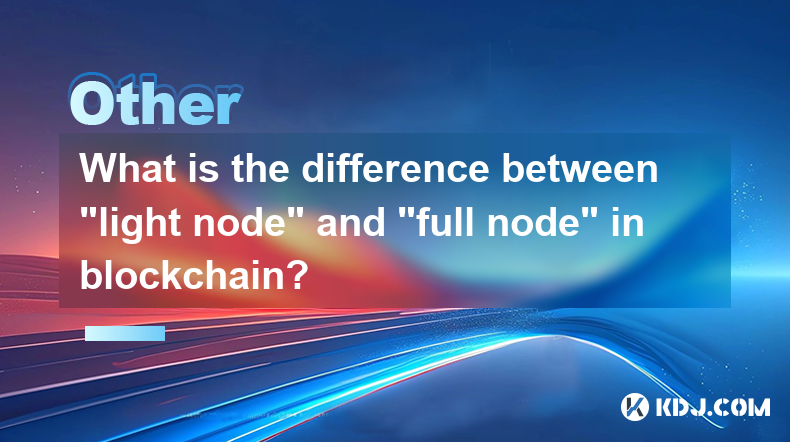
What is the difference between "light node" and "full node" in blockchain?
Mar 26,2025 at 11:35pm
Understanding Light Nodes and Full NodesThe blockchain, at its core, is a distributed ledger. To participate in this network, you need a node – a software program that interacts with the blockchain. However, there are two primary types: light nodes and full nodes. These differ significantly in their functionality and resource requirements. Understandin...
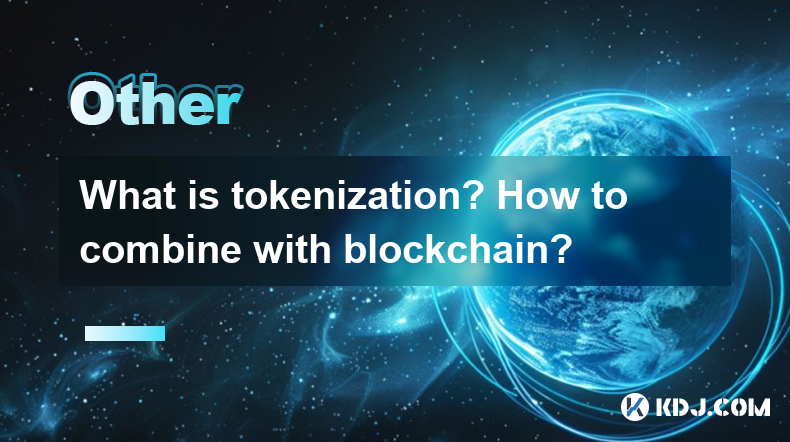
What is tokenization? How to combine with blockchain?
Mar 27,2025 at 03:22pm
Understanding Tokenization in the Cryptocurrency SphereTokenization, in the context of cryptocurrency, refers to the process of representing real-world assets or rights as digital tokens on a blockchain. These tokens can represent anything from physical assets like real estate or art to intangible assets like intellectual property or voting rights. The...
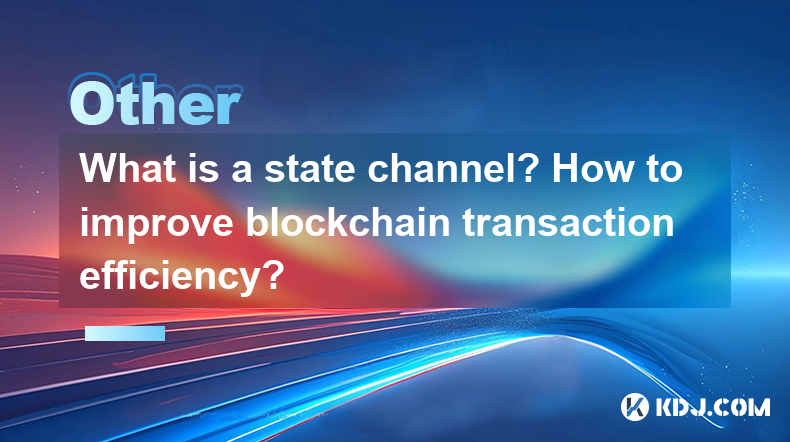
What is a state channel? How to improve blockchain transaction efficiency?
Mar 27,2025 at 10:07pm
Understanding State Channels and Blockchain ScalabilityState channels offer a powerful solution to enhance the transaction throughput of blockchain networks. They achieve this by moving transactions off the main blockchain and into a secondary, private communication channel between participants. This significantly reduces the load on the main blockchai...
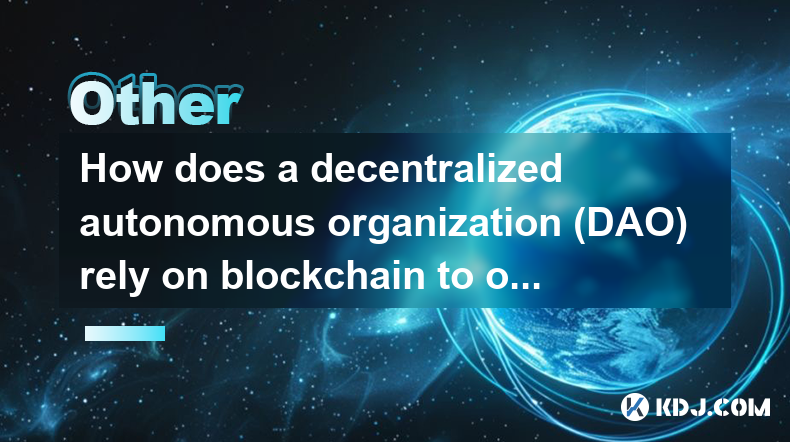
How does a decentralized autonomous organization (DAO) rely on blockchain to operate?
Mar 27,2025 at 03:28pm
The Blockchain Backbone of DAOsDecentralized Autonomous Organizations (DAOs) are fundamentally reliant on blockchain technology for their existence and operation. Without blockchain's inherent properties, a DAO simply wouldn't be possible. The core functionalities of a DAO – transparency, immutability, and automation – are all directly enabled by the b...

What is a blockchain oracle? What is its role?
Mar 27,2025 at 04:36am
Understanding Blockchain Oracles: Bridges to the Real WorldA blockchain oracle acts as a trusted intermediary, connecting blockchain networks with external data sources. Blockchains, by their inherent nature, are isolated systems. They operate based on the information recorded within their own ledger. Oracles bridge this gap, providing verifiable and r...
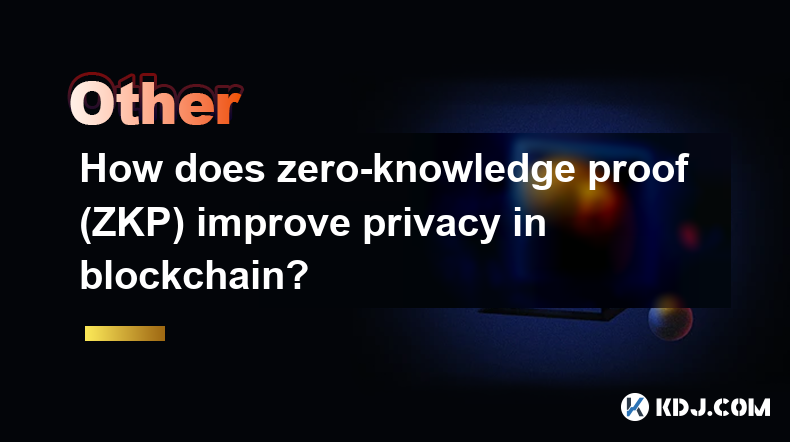
How does zero-knowledge proof (ZKP) improve privacy in blockchain?
Mar 27,2025 at 10:35am
Enhancing Blockchain Privacy with Zero-Knowledge ProofsZero-knowledge proofs (ZKPs) are cryptographic techniques allowing one party (the prover) to prove to another party (the verifier) that a statement is true, without revealing any information beyond the truth of the statement itself. This is crucial for enhancing privacy in blockchain systems, which...

What is the difference between "light node" and "full node" in blockchain?
Mar 26,2025 at 11:35pm
Understanding Light Nodes and Full NodesThe blockchain, at its core, is a distributed ledger. To participate in this network, you need a node – a software program that interacts with the blockchain. However, there are two primary types: light nodes and full nodes. These differ significantly in their functionality and resource requirements. Understandin...

What is tokenization? How to combine with blockchain?
Mar 27,2025 at 03:22pm
Understanding Tokenization in the Cryptocurrency SphereTokenization, in the context of cryptocurrency, refers to the process of representing real-world assets or rights as digital tokens on a blockchain. These tokens can represent anything from physical assets like real estate or art to intangible assets like intellectual property or voting rights. The...

What is a state channel? How to improve blockchain transaction efficiency?
Mar 27,2025 at 10:07pm
Understanding State Channels and Blockchain ScalabilityState channels offer a powerful solution to enhance the transaction throughput of blockchain networks. They achieve this by moving transactions off the main blockchain and into a secondary, private communication channel between participants. This significantly reduces the load on the main blockchai...

How does a decentralized autonomous organization (DAO) rely on blockchain to operate?
Mar 27,2025 at 03:28pm
The Blockchain Backbone of DAOsDecentralized Autonomous Organizations (DAOs) are fundamentally reliant on blockchain technology for their existence and operation. Without blockchain's inherent properties, a DAO simply wouldn't be possible. The core functionalities of a DAO – transparency, immutability, and automation – are all directly enabled by the b...

What is a blockchain oracle? What is its role?
Mar 27,2025 at 04:36am
Understanding Blockchain Oracles: Bridges to the Real WorldA blockchain oracle acts as a trusted intermediary, connecting blockchain networks with external data sources. Blockchains, by their inherent nature, are isolated systems. They operate based on the information recorded within their own ledger. Oracles bridge this gap, providing verifiable and r...

How does zero-knowledge proof (ZKP) improve privacy in blockchain?
Mar 27,2025 at 10:35am
Enhancing Blockchain Privacy with Zero-Knowledge ProofsZero-knowledge proofs (ZKPs) are cryptographic techniques allowing one party (the prover) to prove to another party (the verifier) that a statement is true, without revealing any information beyond the truth of the statement itself. This is crucial for enhancing privacy in blockchain systems, which...
See all articles




















































































